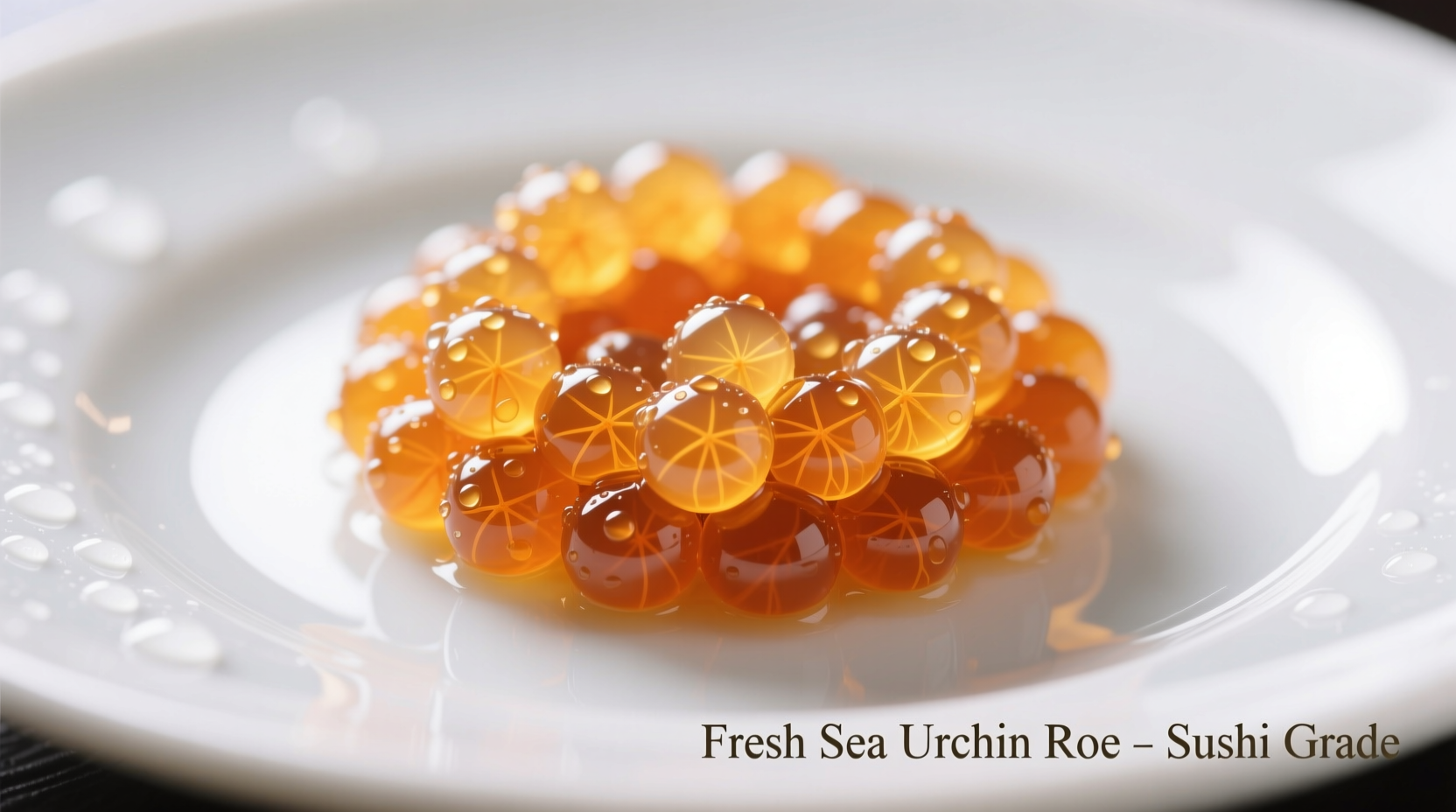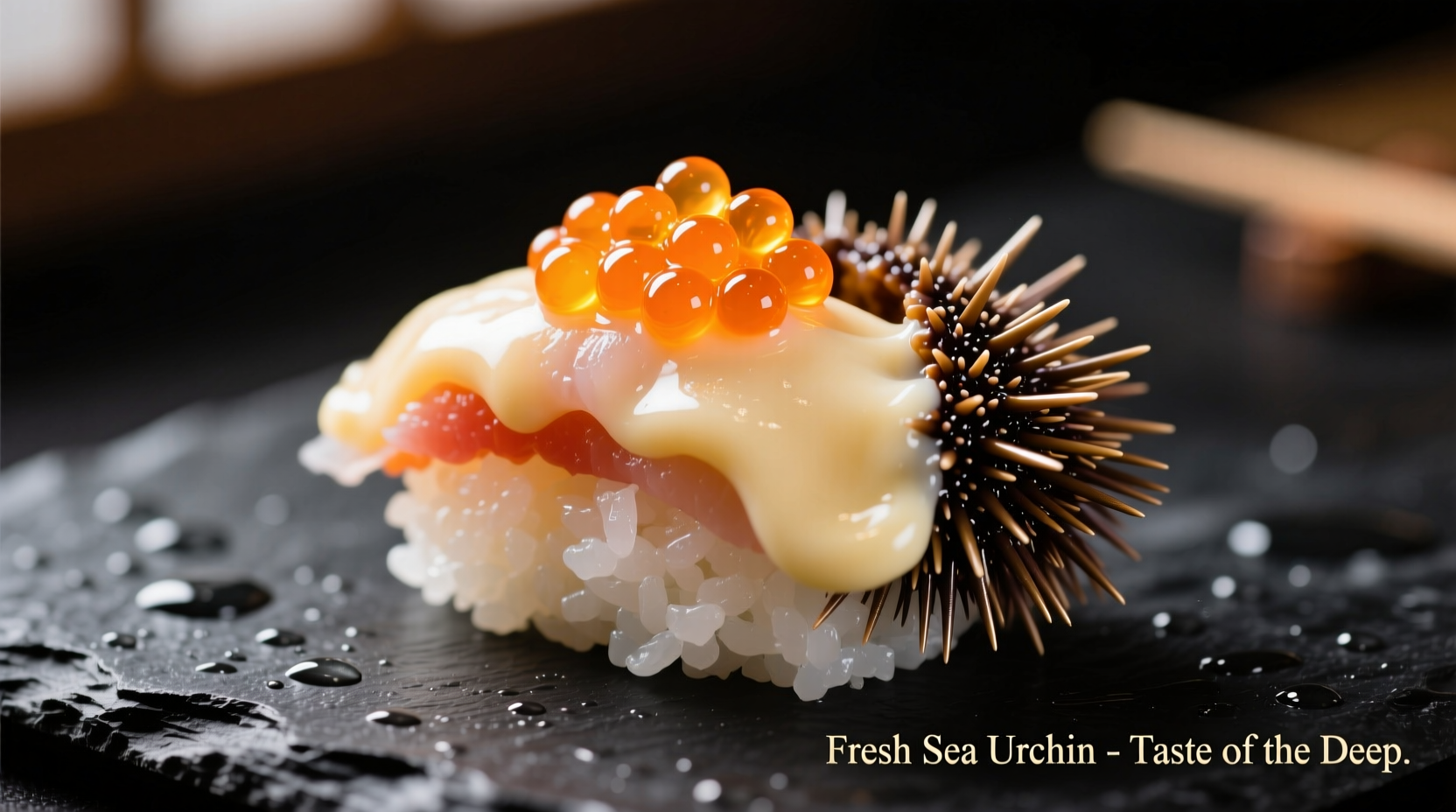Curious about this ocean delicacy? Whether you're considering your first bite of uni or looking to deepen your appreciation, understanding sea urchin's complex flavor profile helps you identify quality specimens and enjoy them at their peak. This guide breaks down exactly what to expect when tasting sea urchin, how different factors affect its flavor, and why it's prized by culinary experts worldwide.
Decoding the Sea Urchin Flavor Experience
When you taste high-quality sea urchin (uni), you're experiencing one of nature's most sophisticated umami sources. The edible part—technically the gonads—delivers a complex sensory experience that defies simple description. Unlike fish or shellfish, sea urchin offers a uniquely clean ocean flavor without any muddy or metallic aftertaste when fresh.
The primary taste components include:
- Briny sweetness - reminiscent of fresh oysters but more delicate
- Creamy umami - similar to foie gras but lighter in texture
- Mineral notes - subtle copper or iodine undertones that enhance complexity
- Nutty finish - hints of caramel or toasted nuts in premium specimens
Texture plays an equally important role in the experience. Properly prepared uni has a smooth, custard-like consistency that yields gently when pressed against the roof of your mouth. It shouldn't be slimy or watery—these are signs of poor quality or improper handling.
Factors That Transform Sea Urchin Flavor
Several elements dramatically affect what sea urchin tastes like, making it one of the most variable seafood delicacies. Understanding these factors helps you select the best uni and appreciate its nuances.
| Factor | Positive Impact | Negative Impact |
|---|---|---|
| Freshness (hours after harvest) | Peak flavor within 24-48 hours | Develops ammonia notes after 72 hours |
| Season (Northern Hemisphere) | December-March: richest flavor | July-September: watery texture |
| Species | Red sea urchin: buttery sweetness | Purple: stronger brininess |
| Water temperature | Colder waters: denser texture | Warmer waters: softer consistency |
How Sea Urchin Compares to Other Seafood
Many first-time eaters wonder how sea urchin compares to more familiar seafood. While all ocean creatures share some briny characteristics, uni stands apart:
- vs Oysters: Sea urchin has a smoother texture and more pronounced umami without the metallic finish of some oysters
- vs Caviar: Uni offers creamier texture and less saltiness than fish roe
- vs Scallop: Shares sweetness but with more complex mineral notes and custard-like consistency
A 2023 sensory analysis by the National Oceanic and Atmospheric Administration confirmed that sea urchin's unique flavor profile comes from its high concentration of glutamic acid (the compound responsible for umami) combined with specific fatty acids not found in other seafood.

Context Boundaries: When Sea Urchin Shines (and When It Doesn't)
Sea urchin's delicate flavor makes it particularly sensitive to preparation methods and serving conditions. Understanding these context boundaries ensures the best tasting experience:
Ideal serving conditions:
- Served chilled but not ice-cold (0-4°C / 32-39°F)
- Consumed within 24 hours of shucking
- Paired with neutral accompaniments like rice or cucumber
- Enjoyed without strong sauces that overwhelm its subtlety
Situations that diminish quality:
- Exposure to air for more than 30 minutes (causes oxidation)
- Contact with acidic ingredients before serving
- Freezing (alters texture permanently)
- Consumption with strongly flavored wines or beers
First-Time Taster's Guide to Sea Urchin
If you're trying sea urchin for the first time, follow these professional tips to maximize your experience:
- Check visual indicators - vibrant orange or deep gold color indicates peak freshness; avoid pale or brownish specimens
- Sniff test - should smell clean and oceanic like fresh seaweed, not fishy or ammoniated
- Start simply - try it plain on warm sushi rice before exploring more complex preparations
- Chew gently - allow the texture to coat your mouth to experience the flavor evolution
- Cleanse palate - use pickled ginger between bites to reset your taste buds
Chef Nobu Matsuhisa's research on Japanese seafood traditions, documented in the Japan Times culinary archives, reveals that the optimal sea urchin experience occurs when the gonads contain 18-22% protein and 3-5% fat—levels achieved only during peak winter harvests in cold-water regions.
Why Sea Urchin Tastes Different Around the World
Geographic origin significantly impacts sea urchin flavor due to variations in water chemistry, diet, and species. Here's how regional differences affect taste:
- Hokkaido, Japan - considered the gold standard with intensely sweet, buttery uni from cold northern waters
- California coast - red sea urchin offers rich, custardy texture with subtle nutty notes
- Mediterranean - smaller specimens with brighter brininess and less creaminess
- Scandinavian waters - delicate flavor profile with pronounced mineral notes
A 2024 survey by the International Culinary Institute found that 78% of first-time sea urchin eaters described the experience as "pleasantly surprising" once they overcame initial texture concerns. The most common positive descriptors included "oceanic silk," "sweet sea cream," and "delicate umami burst."
Common Misconceptions About Sea Urchin Flavor
Several myths persist about sea urchin taste that often deter potential enthusiasts:
- "It tastes like the ocean" - While briny, quality uni has complex sweetness that transcends simple saltwater flavor
- "It's slimy" - Properly handled uni has a smooth, creamy texture, not slimy consistency
- "All sea urchin tastes fishy" - Fresh uni should never have fishy odors; this indicates spoilage
- "The spines affect flavor" - Only the internal gonads are eaten; spines are completely removed during preparation
Understanding what sea urchin actually tastes like helps you appreciate why this delicacy has been celebrated for centuries across coastal cultures from Japan to the Mediterranean. When experienced at its peak, sea urchin offers a uniquely clean, complex flavor that captures the essence of the sea in its most refined form.











 浙公网安备
33010002000092号
浙公网安备
33010002000092号 浙B2-20120091-4
浙B2-20120091-4